Gold medal for architecture Gorki Gorod as the main success at the Olympics in Sochi. An interview with the project’s architect, Mikhail Filippov
|
Gorki-gorod in Sochi. Arch. M.Filippov, photo V.Paevsky.
|
| In 1984 Mikhail Filippov won Style 2001, the international competition held by A+U and JA magazines. His project for this competition simultaneously served as a manifesto for Classical architecture. 30 years later, it may be said that Filippov has realized this manifesto by building Gorki Gorod in Sochi. Other projects designed by Filippov include the Roman House, the Italian district, and the Marshal residential complex, all in Moscow, which together add up to 750,000 square meters in the Classical style. Just as Filippov’s victory in Style 2001was a victory for Russian architecture in the international arena, so today Gorki Gorod may be called the main success of this year’s Olympics. |
| Lara Kopylova // 20 February 2014 |
L.K.: In literally three years an entire Classical city has sprung up in Krasnaya Polyana, the mountain ‘cluster’ and ski resort at Sochi. You designed the part of the town which is situated at 540 metres, while Maksim Atayants created the as yet unfinished development at 960 metres. The area which you designed contains the media village for the Sochi Olympics. This is a development which has had architecture critics, journalists, and the general public melting in delight. If the Olympics had medals for architecture, you would take the gold. How did the idea for this project come about?
M.F.: Back in 1998 I produced a concept for the development of Sochi, including reconstruction of Karo Alabyan’s passenger terminal, which is in the Stalinist Neoclassical style. I showed these proposals at the Venice biennale in 2000. When preparations were underway for the 2014 Olympics, the clients for Gorki Gorod, prior to calling upon my services, spent a whole year studying the lessons of past winter Olympics. They were concerned that when the games are over, Olympic villages invariably find themselves surplus to requirements. This is why they rejected the projects by English and French architects – projects in the mould of traditional Olympic architecture – and adopted my concept of the Classical city. Speaking at a meeting where those present included German Gref, Chairman of the Board of Sberbank, and Aleksandr Tkachev, Governor of Krasnodarsk Region, I talked about an important historical moment in the development of Sochi – the development concept of 1931. At that time Sochi was regarded as a health resort for the whole of the Soviet Union, a Communist paradise. The idea was realized by the outstanding Silver Age Neoclassical architect Ivan Zholtovsky, who became the city’s chief architect. It was thanks to Zholtovsky that in the 1930s to 50s Sochi acquired its Roman and Palladian villas, buildings of amazing artistic quality, including the building of the representative of the Russian Central Executive Committee, designed by Zholtovsky himself. The upcome of my speech was that Gref recommended to Governor Tkahev that he should take Filippov as the ‘new Zholtovsky’. At the same time I also tried to advance the idea that Russia may be represented by beauty alone, and not by other attainments.


Gorki-gorod in Sochi.
L.K.: Incidentally, that’s precisely the way things have turned out. In sport Russia has come away with a gold for figure skating – and figure skating is really ballet, i.e. beauty. The real achievements at these Olympics that everyone is talking about are figure skating, the magic opening ceremony, and the architecture of Gorki Gorod.
M.F.: Moreover, note what kind of beauty this is. It is beauty that is serious, Classical, and sustainable. Essentially the same beauty that we made our name with 100 years ago when Sergei Diaghilev organized the Russian ballet seasons in Paris.
L.K.: But, on the other hand, at the opening ceremony we also saw the beauty of images deriving from the Russian Avant-garde. Is this not so?
M.F.: Yes, the Russian Avant-garde marks the end of the epoch of Mir iskusstva, the journal which had initiated the revival of Neoclassicism at the beginning of the 20th century. Most members of the Russian Avant-garde were part of the culture of Mir iskusstva, shared an allegiance to the philosophy of panaestheticism, and had a classical academic training. The avant-garde Vesnin brothers began by drawing projects in the Neoclassical style, and Melnikov was once a pupil of Zholtovsky.
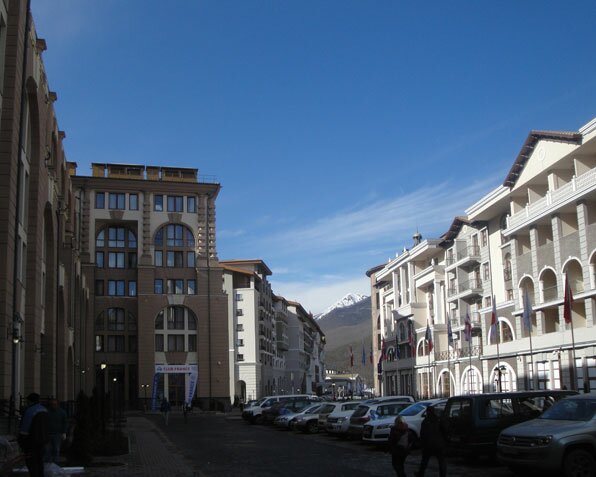
Gorki-gorod in Sochi.
L.K.: Now for a question which you may find not very pleasant. When your project was considered by the urban-planning council in 2010, Andrey Bokov, President of the Union of Architects, said that it was faultless from the point of view of architecture, but that to realize it in 3 years would be impossible given “the way we build in Russia”. And so it came about that the architects who designed Gorki Gorod were not permitted to oversee its construction. As a result, the build quality is, to say the least, far from ideal and not all the architect’s directions have been carried. So the question is: should Classicism be built from high-quality natural materials with a high build quality or are compromises possible?
M.F.: Yes, the construction was carried out by shameless bodgers, but even they were unable to spoil the project. It’s not the materials or the build quality that are the most important thing, but the aesthetic tension in the design itself. In preserving monuments of architecture and recreating buildings and architectural ensembles lost in the war mankind has acted upon a single criterion – and that criterion is beauty. It was beauty, for instance, that proved the salvation of architectural monuments when churches were being demolished following the 1917 revolution in Russia. And it was beauty that saved the centers of old cities in Europe.
I have always believed that aesthetics will always get the best out of materials. And this is what has happened here. The buildings at Gorki Gorod are made from modern materials and in accordance with modern standards of energy efficiency and seismic stability (Sochi is a seismic zone). The main thing is the scale of the historical development, the inventiveness and liveliness of the forms used, and the Classical principle that there should be no unsupported overhanging elements. This is a thought which I have been developing all through my career and I am glad that the concept has here straightened out all the flaws that crept in during construction.
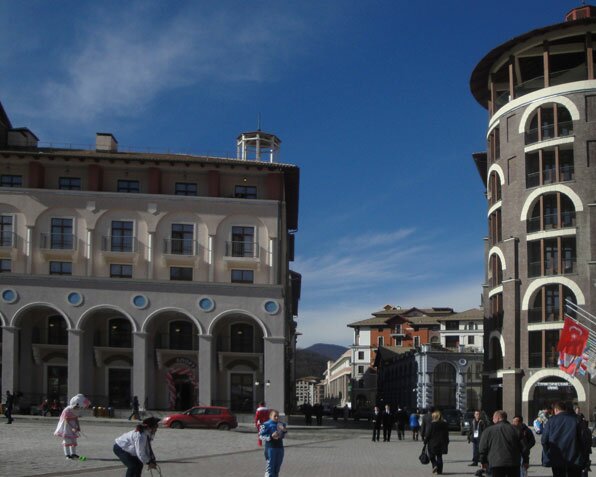
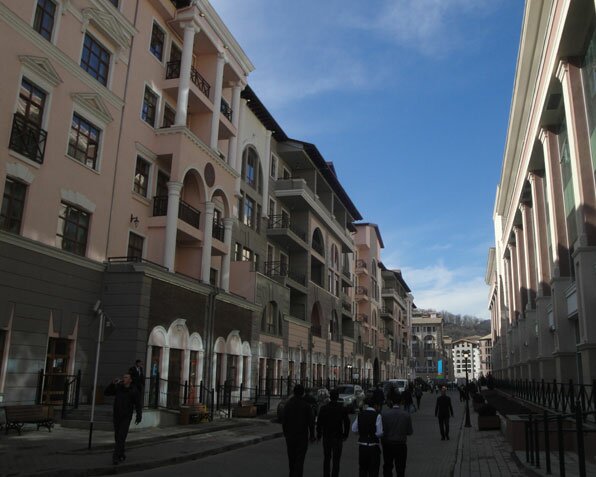
Gorki-gorod in Sochi.
L.K.: There is much excited talk of Gorki Gorod from people freshly returned from Sochi. The main impression people have come away with is of visual comfort, a sense of urban coziness, and a consistent architectural style. The second impression is of diversity, a multiplicity of architectural ‘events’, and of a celebration for the eyes. Could you tell us a little about the concept for this project?
M.F.: The main technique here involved creating houses in the style of a city, and not simply in the Classical style. Our aim was to create the illusion of a city which has sprung up on the site of a ruined amphitheater. You can find something similar in coastal cities in Italy and Spain, and in the Piazza della Repubblica in Rome. I have painted many watercolours with views of such cities, so I understand how this aesthetic effect is attained. I used the same technique to create my Roman House, Italian Quarter, and Marshal residential complex in Moscow. This makes the problem of construction easier. The main stock of buildings in Venice contains very few true masterpieces, and it’s the same with all famous old cities – with the exception of St Petersburg.

Gorki-gorod in Sochi.
L.K.: Let’s go back to the urban-planning council. I was one of the experts reporting to the council; I presented an ecological report on Gorki Gorod. There were even plans to submit one of the buildings in the development for certification under BREEAM (the authoritative system of ecological certification). To what extent has it proved possible to realize these plans?
M.F.: For the most part, we have been successful: we have pedestrian zones and a mixture of uses, meaning that the city will be self-sufficient; it will not die after the Olympics. Gorki Gorod contains housing, offices, hotel, shops, and all the infrastructure needed for skiing and eco-tourism. Right from the start, I incorporated cultural buildings; the second stage will involve a museum, Olympic Park, and a church. An extremely important consideration from the point of view of ecology is the longevity of the architecture. Given that demolishing a building is an extremely energy-intensive procedure which can cause colossal damage to nature (thanks to the enormous CO2 emissions), the style and artistic qualities of what is built become very important. The more convincing these qualities are, the smaller the chance that the buildings will be knocked down fifty years from now. International ecological certificates take account of the extent to which architecture meets local traditions. In Sochi the local tradition (vernacular) is the Neoclassicism of the 1930 to 1950s. It is this tradition that I have continued. And we’ve already talked about the importance of beauty.
According to architecture critic Grigory Revzin, certain of the stadiums will have to be dismantled after the Olympics, since operating them will cost more than they will produce in profit. The housing built in the coastal cluster will probably serve for as long as houses usually serve in Russia, i.e. 50-60 years. And it is only Gorki Gorod which has a chance of a longer life; it could well end up as the only surviving monument to the Olympics in Sochi.
P.S. There are about ten buildings in Sochi which have received BREEAM certification, including one in Gorki Gorod. The certification process is still ongoing. In all, Russia now has three BREEAM-certificated buildings – two in Moscow and one in Sochi.
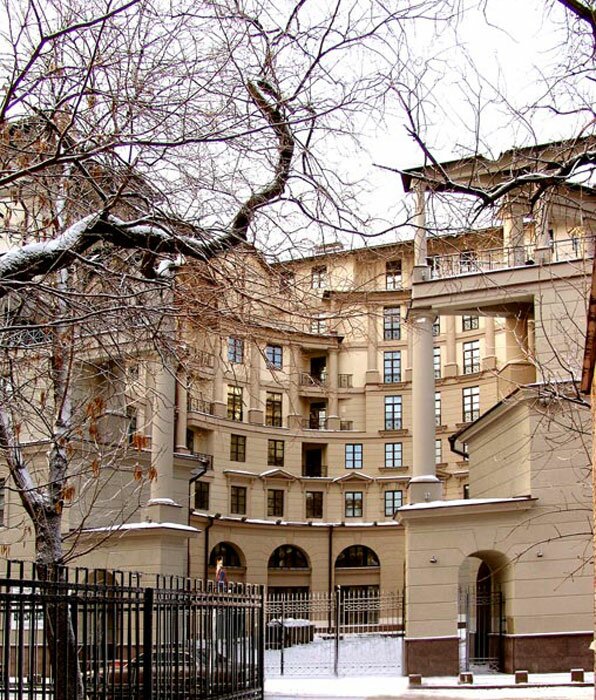
Roman house in Moscow.
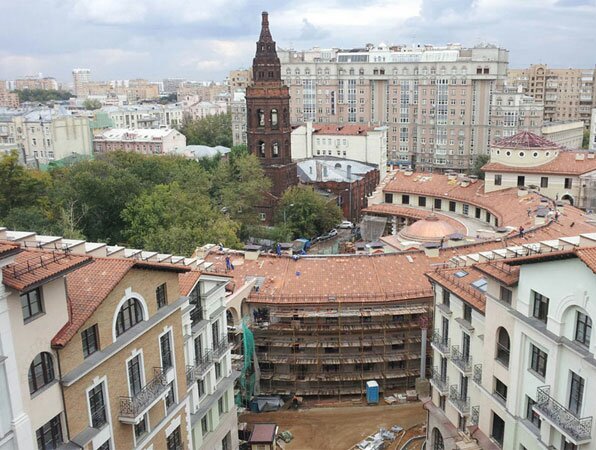
Italian district in Moscow.
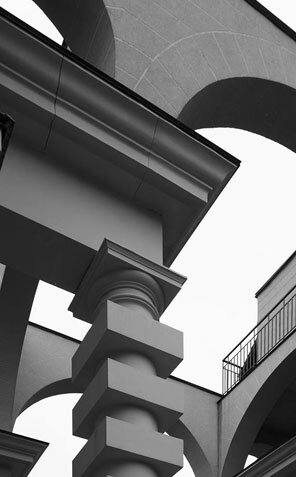 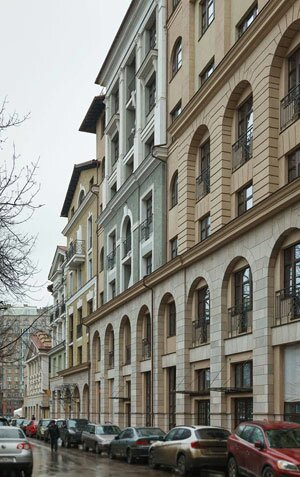
Italian district in Moscow. Photo S.Lorgus.

Marshal residential complex with social housing in Moscow. Photo S.Lorgus.
|

